What happened to FrSky?
FrSky is a Chinese electronics manufacturer for the hobby of radio-controlled modeling (model aircraft, drones, etc). It is best known for radio control systems, such as the Taranis line radio transmitters, the XJT and DJT modules and the respective receivers.
The reason that led me to write this article is so that people understand what happened to the company and why so many loyal customers now feel only disgust for the brand.
Early stages
FrSky was founded in 2010, and its first products were receivers compatible with Futaba’s FASST protocol. After some time, FrSky developed and launched a new 2.4 GHz radio control system, completely different from the current ones, called ACCST.
The ACCST (acronym for “Advanced Continuous Channel Shifting Technology”) was FrSky’s implementation for a technology already known by other manufacturers, the “Frequency Hopping“, which is a radio transmitter that keeps changing its operating frequency in a pre-defined sequence and at pre-defined intervals. This allows the radio link to be more resistant to external interference, in addition to allowing multiple models to be controlled simultaneously without causing mutual interference.

A differential of the ACCST technology compared to the others is that it is bidirectional, that is, at the same time that the pilot’s control sends radio signals to the model, the model also sends information to the control. This is known as “Telemetry”.
Although radios with telemetry were not new at the time, they were extremely expensive, and FrSky made its technology at a much lower cost, without sacrificing quality, which quickly made it very popular.
The first products launched with ACCST technology were the DHT and DFT modules, which could be installed on controlers of any brand (Futaba, Spektrum, Hitec, etc), and thus allowed these controllers to work with the FrSky receivers (which were well cheaper than the original receivers of competing brands).
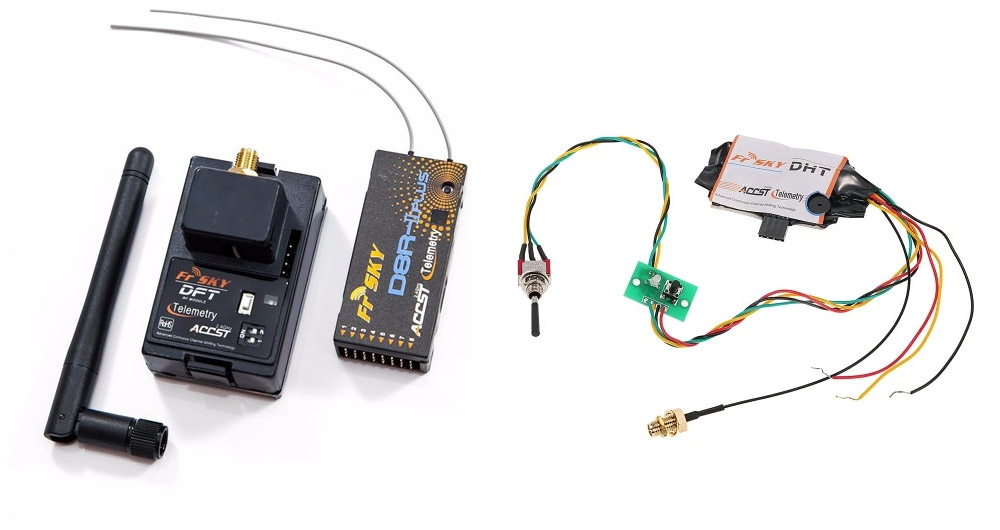
The first receivers were compatible with a protocol called V8. This protocol is capable of transmitting up to 8 different channels with latency of 24ms, has a failsafe function and did not support telemetry.
Soon the D8 protocol was launched, which was basically the same as V8, but with a basic telemetry function, together with the DJT module, a new module that was able to control both V8 and D8 receivers. It had the shape of the JR bay, that is, it was compatible with the JR Propo radio controllers and several other models, such as the Turnigy 9X. It was an update that maintained compatibility with old receivers. FrSky also maintained the production of V8 receivers for a long time, so that people could continue using their old modules without any problem.
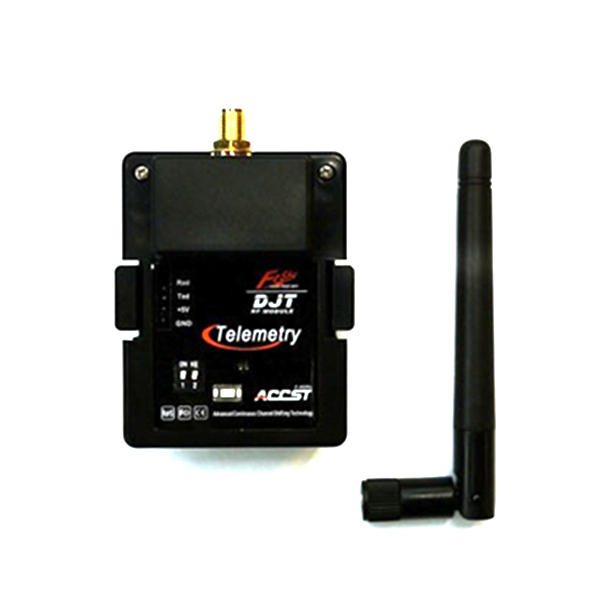
The Taranis era
In 2012 FrSky introduced its first truly revolutionary system: the Taranis X9D.
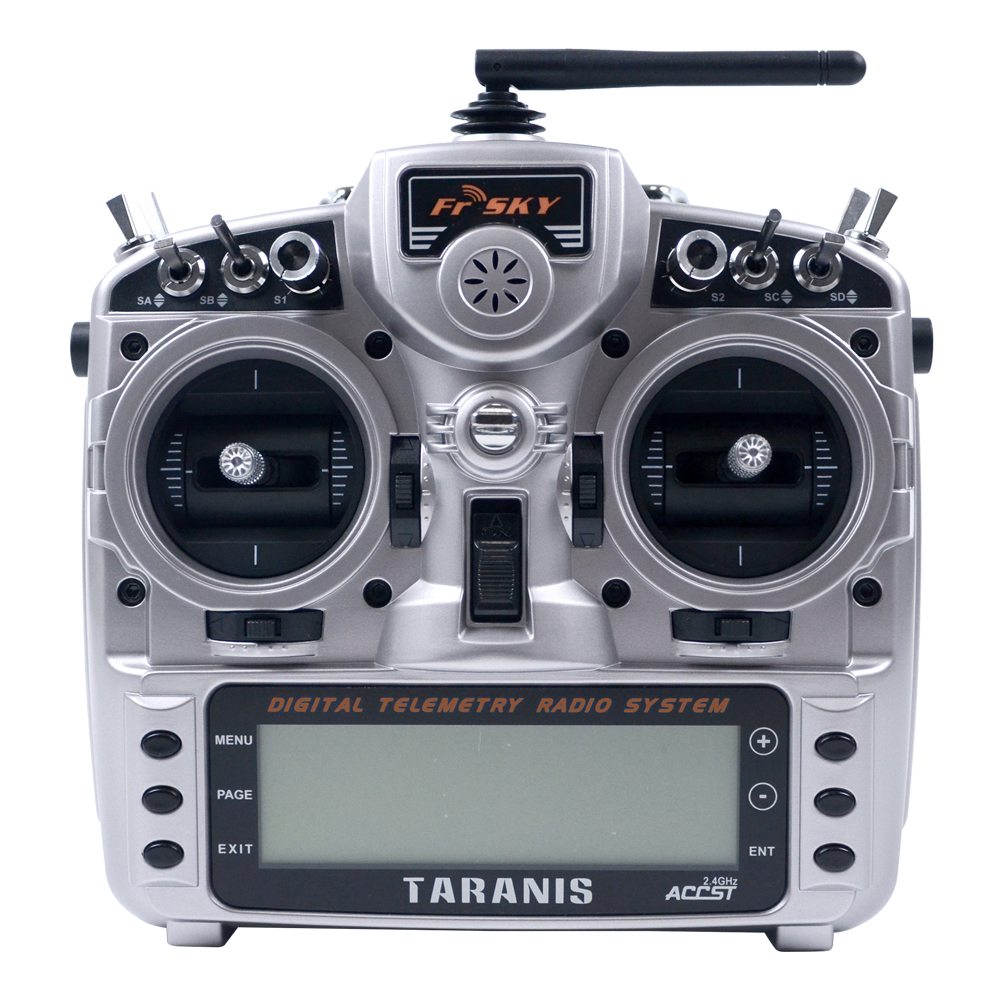
It was a complete radio control system, which came with an entirely new internal radio module, called XJT. This radio was compatible with everything that FrSky had launched before: V8 and D8 receivers. In addition, it introduced two new protocols, the D16 and the LR12.
LR12 is a unidirectional protocol (therefore, it does not support telemetry) and supports 12 channels with 25ms latency. The main advantage of this protocol is to allow long range control, together with this protocol FrSky launched the L9R receiver, which is a receiver with amplified antennas and 9 PWM or 12 channels by SBUS. The L9R was able to reach twice the range of a conventional receiver, easily exceeding 5 km range, a remarkable feat for a 2.4Ghz link.
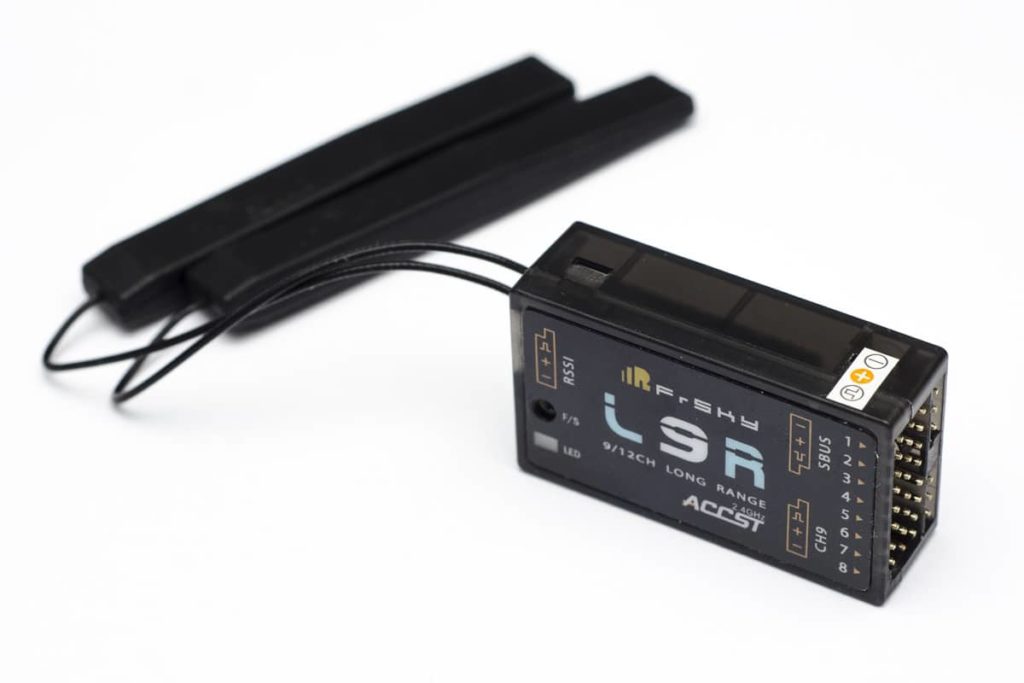
The D16 protocol was an evolution of the D8, supporting up to 16 channels with 18ms of latency or 8 channels with 9ms of latency, complete telemetry through the SmartPort system, and a huge variety of receivers for the most different needs, from small receivers to drones even complete receivers for large planes.
They also launched the external XJT module, which could be coupled with controllers from other brands, or Taranis itself, thus increasing its original capacity. By adding an external XJT module to a Taranis radio, it was possible to control up to 32 different channels, working at the same time, which allowed almost any model, however complex, to be controlled.
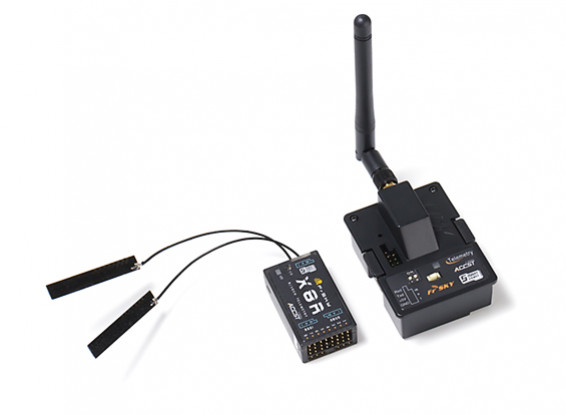
The radio controller itself is already very cool. It is an excellent build quality controller, with two gimbals, six 3-position switches, one 2-position switch, one momentary switch, 4 potentiometers, a huge monochrome graphic display with lighting. It is equivalent to the Futaba 14SG, a $ 600 radio, but only costing $ 150. It was a truly killer price for such a complete system.
The Open Source Community
Another killer feature of the Taranis X9D is that it uses the OpenTX system, a free open-source operating system for radio controllers.
We must remember that it was launched at the very beginning of the drone era. The first quadcopters are from mid-2012 and 2013, and this type of model depends completely on embedded electronics to work. A drone needs a flight controller board with an accelerometer and gyroscope to fly, and virtually all flight controller systems were made by the free software community.
So there was a natural sympathy between FrSky (which supported the development of OpenTX) and the developers of flight controllers for drones and autopilots for airplanes. FrSky soon realized that the market would demand serial interfaces on the receivers and added SBUS and SmartPort outputs to all of its new receivers. FrSky’s technology seamlessly integrated with the needs of this new market segment. Ardupilot, one of the first flight control systems, Explicitly supports the use of FrSky radios in its documentation.
All of this, coupled with its low price and good quality, made this radio system quickly become a market standard, surpassing traditional competitors such as Futaba, Hitec, Spektrum, Graupner and others.
Expansion
In 2014, FrSky launched an improved version of the Taranis X9D, the X9D+, which was basically the same, but with the addition of tactile response (vibration) and a PCM audio system. In other words, it is capable of playing small audio files, which can be programmed to play according to controls or telemetry data.
FrSky continued to grow very quickly, with the popularization of FPV drones and the growth of electric model aircraft. They launched several new products, including cheaper radio controls (like the Q X7 and X-Lite) and more expensive (like the Horus line), receivers for the most diverse purposes (like the XSR and XM +, specifically made for FPV drones). Virtually every BNF model or drone came with an ACCST D16 receiver.
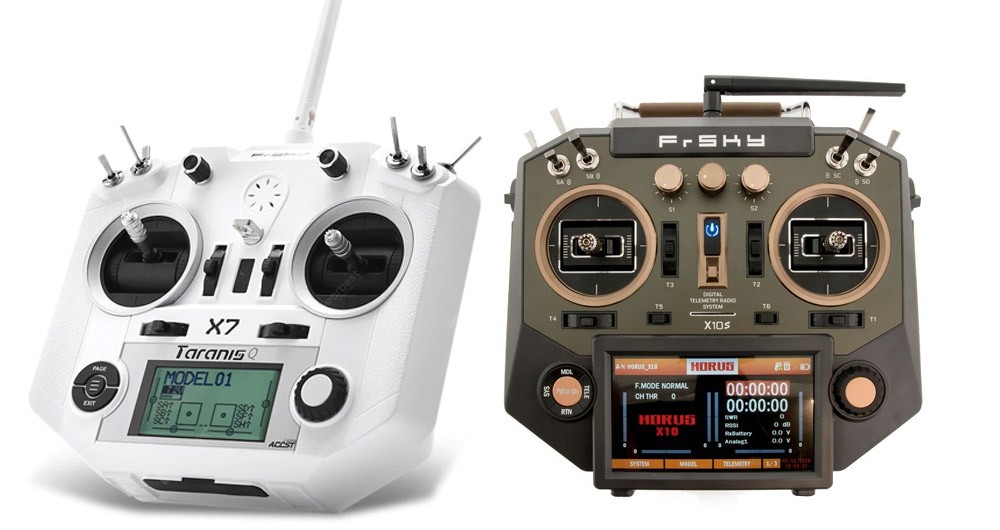
Introduction of the ACCST R9 system
In 2017, FrSky launched its 900Mhz system (868Mhz in Europe), called R9. The initial launch consisted of a module (which was made to fit behind the radio controller, as was already done with the old XJT and DJT modules) called R9M, and a receiver called just R9. The system was basically the same as the ACCST D16, but in the 900Mhz frequency range and with a more powerful amplifier, which allows the signal reach and penetration to be much greater, although it allows fewer pilots to use the system at the same time.
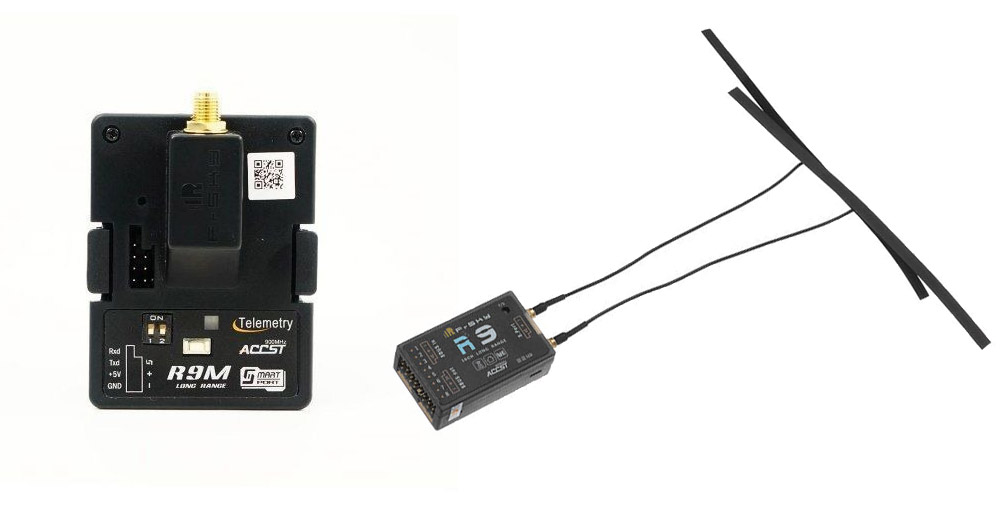
At launch, as before, the biggest attraction was the low price. The complete system cost less than $ 100, which was a fraction of the price of TBS’s Crossfire system (Crossfire TX was sold for $ 220 and Diversity RX for $ 100).
However, it soon became clear that FrSky was not yet ready to launch the system, and the modules that arrived on the market were not performing well. Often, the antennas that came in the package were not ideal for the system’s frequency range.
It took a several months and several software updates until the R9 system was finally stable. By this time, FrSky had already released a new, revised version of the R9M module, with some hardware improvements. However, without abandoning the old module, which continued to receive the same firmware updates as the newer version.
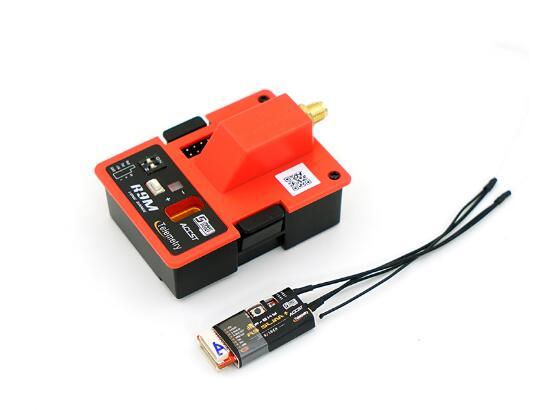
The R9M module was made to work with any radio control, and not just FrSky’s. Any radio controller with a bay for standard JR modules could use the system, in the same way as the old XJT and DJT modules.
FrSky also launched several new receivers compatible with the new R9 system, being the R9MM and R9Mini, R9 Slim and R9 Slim+ receivers.
Allegations of anti-competitive practices
It is important to remember: In 2010, FrSky made receivers compatible with Futaba radios. The company was born out of that. Then they created its own technology and was successful, but FrSky still sells TF line receivers, which are made to work with Futaba’s FASST protocol.
TBS and FrSky were longtime partners. TBS itself recommended that its system be used in conjunction with a Taranis X9D+, it was possible to buy Taranis directly from the TBS store, and both companies worked together to improve the integration between their 2 main products.
When FrSky launched its Q X7 radio, they had modified some details in the module bay to make TBS Crossfire incompatible with it. This movement was seen with great strangeness by the entire community. Today we know that the reason for this is that FrSky would be developing its own UHF radio system (the R9), and therefore, making its new radio incompatible with Crossfire would facilitate the adoption of the R9.
The plan might have worked, had it not been for the fact that the R9 was born with so many technical problems, which gave TBS enough time to create a reduced (and therefore cheaper) version of Crossfire, in addition to thinking about a simple modification on the Q X7 to allow it to work with Crossfire. In the end, the lesson learned was FrSky’s unsuccessful attempt to sabotage TBS.
A few months later, FrSky introduced the R9 system, making it clear to everyone the intention to compete with Crossfire. TBS defended itself by claiming that the R9 was a Crossfire clone (which soon proved to be false).
TBS, however, took a risky approach: They sent a letter to all of its distributors, threatening to discredit the distributor that sells the R9 system. This movement caused some panic among the distributors, who now found themselves in a dilemma: To sell or not to sell the R9 system, which was much cheaper than the Crossfire and therefore would sell much more.
In the USA, most stores preferred to maintain the partnership with TBS and not make the R9 system available. But Banggood, which is the largest hobby store in the world and is based on China, never sold anything from TBS, and had no problem making the R9 system available to the market eager for a cheaper UHF system than Crossfire.
TBS’s move proved effective and they managed to get its revenge for the sabotage attempt suffered from FrSky months before. Not without causing some discomfort in the community, as FrSky ended up being harmed because of the false claims of cloning.
FrSky just didn’t have to sabotage TBS. Its R9 system is much more integrated with OpenTX than Crossfire (which depends on LUA Scripts until today). In the long run, if FrSky had a working system from the start, and managed to sell it freely on the USA market, it would have easily beaten TBS for having a good enough and much cheaper product. The sabotage attempt to TBS had a very expensive price for FrSky.
In the end, the lesson that remains is that commercial terrorism works. And that is a lesson that FrSky would apply in a very short time.
The Jumper case
In 2019, a new Chinese company appears, the “Jumper XYZ”, and arrives with a new radio controller, the Jumper T12. It was a radio controller with a design clearly inspired by the late Futaba TS8G, but with a smaller size and striking colors, it looked much more like a toy radio than a hobby or professional grade radio. However, it runs OpenTX and has JR bay with a “multiprotocol” radio module, which is capable of transmitting using several common protocols on the market: S-FHSS (from Futaba), DSMX and DSM2 (from Spektrum), AFSHD and AFSHD-2A (from FlySky), Walkera, WLToys… And also ACSST D8 and D16 from FrSky!
FrSky started to look closely at Jumper, but initially they did nothing, because they did not believe that that “toy” radio would offer a risk. They were mistaken.
Just 3 months later, Jumper introduced its Flagship radio controller, the T16. A radio with a much more sober appearance and construction, with a huge high resolution color screen. The radio had everything on the Horus X10S (FrSky Premium model sold in the $ 300 range), however, it only cost $ 150.
This release did not please FrSky, who looked more closely at the radio and noticed that it ran exactly the same OpenTX firmware as the X10S. That was enough for FrSky to repeat the TBS moves: They sent a letter to all distributors threatening to discredit the supplier who sells the Jumper T16 model.
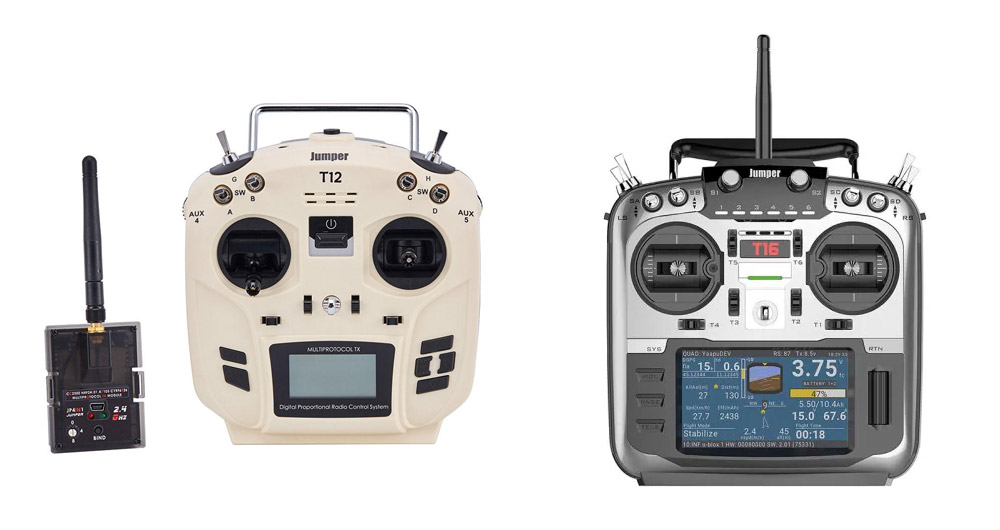
The cloning claim soon turned out to be unfounded. OpenTX is free and open-source software, and all Jumper did was create its hardware around the software that already existed. This is not cloning, it is reverse engineering and there is no problem doing that with OSS. However, FrSky did not change its position, after all, it is convenient to maintain the embargo. Few distributors decided to risk the partnership with FrSky, and they suffered the embargo of FrSky as a consequence.
FrSky’s hypocrisy
It must be considered that the fact that the multiprotocol module is compatible with the ACCST protocol is an infringement of intellectual property. Perhaps it is, but it must not be forgotten that the module itself is another separate project, also free and open source code, and Jumper has no direct relationship with it. Jumper basically builds hardware on top of free software that is available to everyone, and there is nothing wrong with that.
We must also consider that this is the root of FrSky! It was born creating receivers compatible with Futaba!!! How hypocritical they are to complain that they cloned their protocol when they cloned Futaba’s protocol theyselfs.
The ACCESS protocol
In 2019, FrSky introduced a new transmission protocol, called “ACCESS”, which is an acronym for “Advanced Communication Control and Elevated Spread Spectrum” (yes, the acronym does not makes much sense).
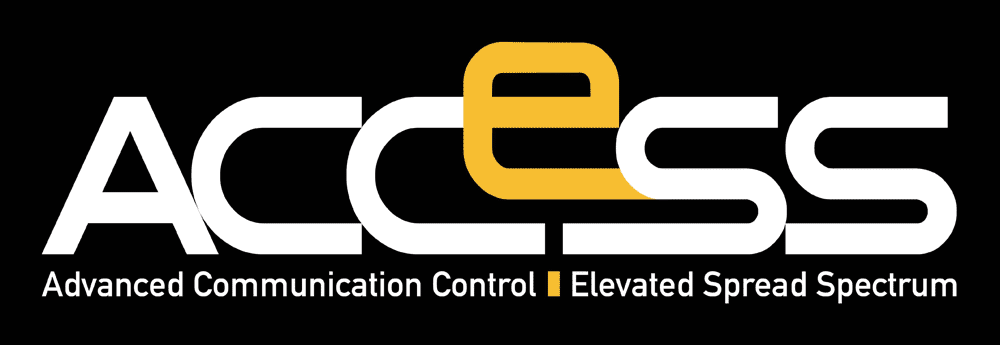
This protocol, according to FrSky, introduces several new features, including more range, more channels, more robust link and less subject to interference, and encryption.
Note: This protocol is not compatible with NOTHING that FrSky has done so far. All receivers, all modules, all different radio models… Everything is incompatible.
FrSky first introduced the X-Lite PRO radio control, which is a model based on OpenTX but with an internal module incompatible with ACCST receivers. Then, they removed one by one the radios they sold (the entire Taranis and Horus line), and replaced them with very similar versions, but with “2019” in the name, and compatible only with the ACCESS protocol.
FrSky is free to create new technology and do whatever they want with it. The problem is that they suddenly killed ACCST technology. In other words, they would no longer sell receivers, modules and radios to the ACCST standard, a standard that the entire industry had already adopted at that time.
Even the ACCST R9 standard has been replaced by an ACCESS R9, which is obviously also incompatible with the previous model, which had been introduced less than 2 years before.
If you already have an external DJT, XJT or R9M module, you cannot use it with Taranis 2019. If you have an R9M 2019, you cannot use it with the old Taranis or with radios from other brands. Now it is only compatible with FrSky radios, and only ACCESS models (at least not without flasing an experimental firmware called “FLEX”).
The R9 situation is so confusing that is deserves a new article just to explain that. I’ll make it soon.
The noise in the community was so great that FrSky ended up backing down a little, and added support for the ACCST D16 to the new “2019” radios, so at least the D16 receivers would continue to work. However, support has not been extended to V8, D8 and LR12 receivers.
Although small, this update calmed the community’s spirits, as it implied that FrSky would continue to sell D16 receivers, which is sufficient for current radios to continue working.
ACCST v2
Peace would be short lived. In January 2020, FrSky introduced the ACCST V2 protocol. This is an update for ALL OLD RADIOS: XJT external module, Taranis X9D internal module, X9D +, Q X7, Horus, and all D16 receivers already launched.
This update, according to FrSky, improves transmission performance. But in practice what this update does is to make everything incompatible with the original ACCST protocol.
This way, FrSky will only sell D16 receivers compatible with ACCST V2, and thus will force current owners of old FrSky radios to update the firmware of everything to the new version. FrSky will ensure that the radios work only with original FrSky receivers, since receivers from other brands will not have this update.
Conclusion
FrSky is apparently committed to destroying everything it has built for almost 10 years. In 2015, if someone wanted to enter the hobby of drones and airplanes, it was easy to say “Buy a FrSky radio”. Nowadays there is no longer such an obvious choice.
Although FrSky’s products are still good and are still cost-effective, this instability creates insecurity. Should I commit to the FrSky ecosystem? What if tomorrow they change everything again and all my equipment gets obsolete? Do I have to flash new firmwares to all my aircrafts every time I need to buy a new receiver?
It is sad to think that all these changes have the sole purpose of making the hardware incompatible with the clones. These are not new features that would break the previous protocol. It would be possible to maintain compatibility with everything if they wanted to, it is not a technical problem, it is a purely commercial problem.
This hypocrisy has already caused the hobbyist community to no longer look at FrSky with the same admiration of before. The company that created a whole ecosystem of integrations with all emerging technologies, that used proprietary technologies and made them accessible and easy to integrate to everyone, now playing this shameful role of trying to stop innovation through commercial terrorism and anti-competitive practices.
